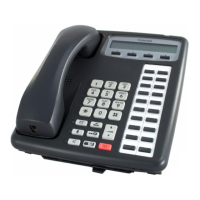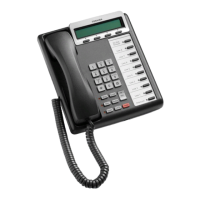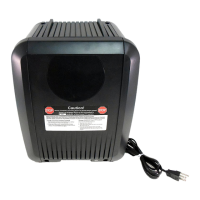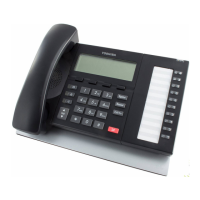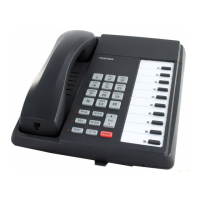Features
DTMF Receivers
Strata CTX General Description 11/02 53
DTMF Receivers
DTMF receivers are used when receiving incoming DNIS DID, Tie or DISA line calls and when
originating calls with standard tone-dial telephones. Voice mail systems also require DTMF
receivers for a number of VM features, even if using SMDI or Toshiba Proprietary VM
integration. Four circuits are automatically active with the initial basic processor. Activation of
more than four receivers requires the purchase of a DTMF software license, in four-circuit
increments.
DTMF receivers require an optional ARCS subassembly on the CTX100 processor and are built
into the CTX670 processor. For the number of receiver circuits, refer to Table 7 on page 13.
DTMF Back Tone
The system can be programmed to allow or prevent Dual-tone Multi-frequency (DTMF) tones
from being returned to digital telephones when a user dials on outside lines or sends DTMF digits
to a voice mail device.
DTMF and Dial Pulse CO Line Compatibility
When making outside calls, signals generated by pressing the dial pad buttons of a digital
telephone are neither DTMF nor rotary dial signals – they are digital signals. The system can be
programmed to translate these signals to either DTMF or rotary dial signals as required by the
serving CO. Once the connection has been made, any further digits sent will always be sent as
DTMF or rotary to allow the operation of devices at the other end of the connection.
DTMF Signal Time
DTMF tones that are sent via Speed Dial to lines and via automatic dialing to voice mail devices
can be set to 80 or 160 milliseconds, or continuously. The time can be set system wide
independently for line out-dialing and for voice mail automatic dialing.
Emergency Call
An Emergency Call access code can be established in the Strata CTX to route calls to specified
emergency destinations and to prioritize their delivery to those destinations. Up to four emergency
destinations can be programmed for each mode of operation: Day, Day2 and Night. This is
particularly useful in applications where employees, patients or guests are not expected to know
where to call for help at different times of the day.
Feature Prompting with Soft Keys
As an alternative to dialing access codes and using feature buttons, station users with LCD digital
telephones use Soft Keys (shown on their LCD) to access features. Abbreviated feature names
appear during a call (when the telephone is in the ring or talk state) on the LCD above fixed keys.
Users can select a feature by pressing the associated key. The LCD feature selections change
according to the call state to provide the most logical options.
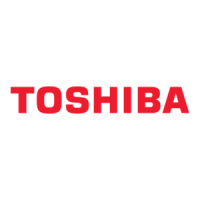
